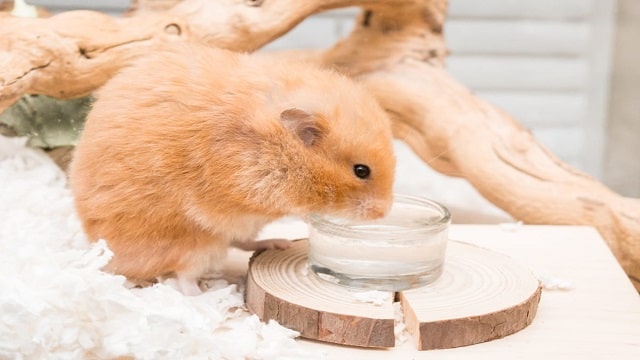How Much Water Should A Hamster Drink?
Do you think your hamster drinks too little? Do you know how much water it needs to live? Hydration is essential for a hamster.
The hamster is a very common pet in homes because its care is simple and cheap, they are beautiful and children also like them a lot. In addition, it is not necessary to take them to the vet, unless they get sick, which is not usual if we take care of them as they need. For this reason, we show you a very important topic in their diet, which is hydration: What should they drink? How much? Do we have to control it? Like the rest of their care, water is a simple resource to give them, but we must always keep in mind some small tips.
The importance of water for hamsters
The origin of this type of rodent is found in the deserts and steppes of Asia. This is why it is a species that survives with little water, since throughout evolution it has become accustomed to living like this. Generally, they cover their water needs by eating foods rich in water, such as fruits and vegetables.
A hamster should drink between 8 and 12 ml of water a day.
When should you drink water?
Hamsters consume 10 ml of water per 100 grams of weight per day, so an adult common hamster usually consumes 8 to 12 ml per day. Other breeds, such as the dwarf or Russian hamster, or the Roborowski hamster (which is the smallest of all), are smaller in size, so the amount of water is reduced.
It is common for people to fill the water bowl with water and not notice much decrease in volume throughout the day. However, the hamster drinks, and especially when the rodent is new in our home, we like to see how it does it and we are surprised that it only wants to drink those few drops.
The amount of water you drink also depends on your diet. If you include fruits and vegetables, which are rich in water, in your diet, you will drink less because these foods will provide you with part of the necessary amount, as humans and other types of animals do.
Should I monitor the water my hamster drinks?
There are two ways to give water to our hamster. One is the classic bottle with a tube that hangs from the cage, and the other is to place a small container, like a bottle lid, filled with water inside the cage. It is important that the water source is always in the same place, because the hamster is an animal of habit, and changing the location of objects disorients them. The best option is the bottle drinker because it will not take up space in the cage and, more importantly, we avoid the risk of it tipping over. In addition, the hamster will drink from it what it needs.
If we choose the second option, we should not fill the container too much because this way we will avoid the hamster getting too wet, and if it were to tip over by accident, the sawdust in the cage would get wet and that is not at all advisable for the care of the rodent. The hamster does not react well to humidity, it is not part of its optimal environment, and if they get too wet they can develop diseases, such as wet tail syndrome.
In general, the first option is the best. However, there are a number of factors that do need to be controlled:
– We must clean and refill the container with fresh water every day . Otherwise, it can become contaminated and cause digestive disorders, such as diarrhea.
– It is recommended that the water does not come directly from the tap, but rather it is boiled and then cooled, or filtered . We can also give it still mineral water. This will prevent it from consuming some substances present in tap water that could harm it. It is common for people to give it normal water without noticing any problems in the rodent, the veterinarian is the best person to guide us in this regard.
– It is necessary to check frequently that the water pipe is not blocked. Sometimes this happens and this prevents the water from coming out, causing our rodent to have nothing to drink and become desperate.
Lack or excess of water: Consequences
When our hamster lacks water, we will notice that it is especially restless, trying to get out of the cage or sticking its snout out of the bars. If the rodent does not have access to water when it is thirsty, and there is no possibility of going to get it, it will develop stress. If this continues over time, the most visible symptom will be hair loss, as well as facilitating the development of diseases.
Dehydration leads to constipation
Excess water in the rodent’s diet can only be applied through food. As we already know, the hamster tends to drink only what it needs, so it is better to give it too much water in the water bowl. But, going back to food, we must avoid giving it only fruit or vegetable-type foods, which are rich in water, but which should not be overdone. One of the consequences of this is that they develop diarrhea, which if it is serious, can cause dehydration of our pet, the same as if we do not give them enough water.

